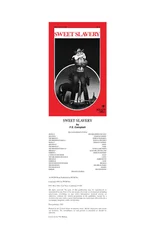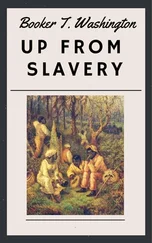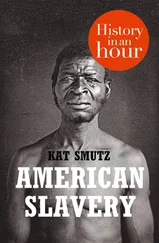Further, it appears in evidence, that the corn given to the slaves is often defective. This, the reader will recollect, is the voluntary testimony of Thomas Clay, Esq., the Georgia planter, whose testimony is given above. When this is the case, the amount of actual nutriment contained in a peck of the "gourd seed," may not be more than in five, or four, or even three quarts of "flint corn."
As a quart of southern corn weighs at least five ounces less than a quart of northern corn, it requires little arithmetic to perceive, that the daily allowance of the slave fed upon that kind of corn, would contain about one third of a pound less nutriment than though his daily ration were the same quantity of northern corn, which would amount, in a year, to more than a hundred and twenty pounds of human sustenance! which would furnish the slave with his full allowance of a peck of corn a week for two months! It is unnecessary to add, that this difference in the weight of the two kinds of corn, is an item too important to be overlooked. As one quart of the southern corn weighs one pound and eleven-sixteenths of a pound, it follows that it would be about one pound and six-eighths of a pound. We now solicit the attention of the reader to the following unanimous testimony, of the civilized world, to the utter insufficiency of this amount of food to sustain human beings under labor. This testimony is to be found in the laws of all civilized nations, which regulate the rations of soldiers and sailors, disbursements made by governments for the support of citizens in times of public calamity, the allowance to convicts in prisons &c. We will begin with the United States.
The daily ration for each United States' soldier established by act of Congress, May 30, 1796 was the following: one pound of beef, one pound of bread, half a gill of spirits; and at the rate of one quart of salt, two quarts of vinegar, two pounds of soap, and one pound of candles to every hundred rations. To those soldiers "who were on the frontiers," (where the labor and exposure were greater,) the ration was one pound two ounces of beef and one pound two ounces of bread. Laws U. S. vol. 3d, sec. 10, p. 431.
After an experiment of two years, the preceding ration being found insufficient, it was increased, by act of Congress, July 16, 1798, and was as follows: beef one pound and a quarter, bread one pound two ounces; salt two quarts, vinegar four quarts, soap four pounds, and candles one and a half pounds to the hundred rations. The preceding allowance was afterwards still further increased.
The present daily ration for the United States' soldiers, is, as we learn from an advertisement of Captain Fulton, of the United States' army, in a late number of the Richmond (Va.) Enquirer, as follows: one and a quarter pounds of beef, one and three-sixteenths pounds of bread; and at the rate of eight quarts of beans, eight pounds of sugar, four pounds of coffee, two quarts of salt, four pounds of candles, and four pounds of soap, to every hundred rations.
We have before us the daily rations provided for the emigrating Ottawa Indians, two years since, and for the emigrating Cherokees last fall. They were the same--one pound of fresh beef, one pound of flour, &c.
The daily ration for the United States' navy, is fourteen ounces of bread, half a pound of beef, six ounces of pork, three ounces of rice, three ounces of peas, one ounce of cheese, one ounce of sugar, half an ounce of tea, one-third of a gill molasses.
The daily ration in the British army is one and a quarter pounds of beef, one pound of bread, &c.
The daily ration in the French army is one pound of beef, one and a half pounds of bread, one pint of wine, &c.
The common daily ration for foot soldiers on the continent, is one pound of meat, and one and a half pounds of bread.
The sea ration among the Portuguese, has become the usual ration in the navies of European powers generally. It is as follows: "one and a half pounds of biscuit, one pound of salt meat, one pint of wine, with some dried fish and onions."
PRISON RATIONS.--Before giving the usual daily rations of food allowed to convicts, in the principal prisons in the United States, we will quote the testimony of the "American Prison Discipline Society," which is as follows:
"The common allowance of food in the penitentiaries, is equivalent to ONE POUND OF MEAT, ONE POUND OF BREAD, AND ONE POUND OF VEGETABLES PER DAY. It varies a little from this in some of them, but it is generally equivalent to it." First Report of American Prison Discipline Society, page 13.
The daily ration of food to each convict, in the principal prisons in this country, is as follows:
In the New Hampshire State Prison, one and a quarter pounds of meal, and fourteen ounces of beef, for breakfast and dinner; and for supper, a soup or porridge of potatos and beans, or peas, the quantity not limited.
In the Vermont prison, the convicts are allowed to eat as much as they wish.
In the Massachusetts' penitentiary, one and a half pounds of bread, fourteen ounces of meat, half a pint of potatos, and one gill of molasses, or one pint of milk.
In the Connecticut State Prison, one pound of beef, one pound of bread, two and a half pounds of potatos, half a gill of molasses, with salt, pepper, and vinegar.
In the New York State Prison, at Auburn, one pound of beef, twenty-two ounces of flour and meal, half a gill of molasses; with two quarts of rye, four quarts of salt, two quarts of vinegar, one and a half ounces of pepper, and two and a half bushels of potatosto every hundred rations.
In the New York State Prison at Sing Sing, one pound of beef, eighteen ounces of flour and meal, besides potatos, rye coffee, and molasses.
In the New York City Prison, one pound of beef, one pound of flour; and three pecks of potatos to every hundred rations, with other small articles.
In the New Jersey State Prison, one pound of bread, half a pound of beef, with potatos and cabbage, (quantity not specified,) one gill of molasses, and a bowl of mush for supper.
In the late Walnut Street Prison, Philadelphia, one and a half pounds of bread and meal, half a pound of beef, one pint of potatos, one gill of molasses, and half a gill of rye, for coffee.
In the Baltimore prison, we believe the ration is the same with the preceding.
In the Pennsylvania Eastern Penitentiary, one pound of bread and one pint of coffee for breakfast, one pint of meat soup, with potatos without limit, for dinner, and mush and molasses for supper.
In the Penitentiary for the District of Columbia, Washington city, one pound of beef, twelve ounces of Indian meal, ten ounces of wheat flour, half a gill of molasses; with two quarts of rye, four quarts of salt, four quarts of vinegar, and two and a half bushels of potatos to every hundred rations.
RATIONS IN ENGLISH PRISONS.--The daily ration of food in the Bedfordshire Penitentiary, is two pounds of bread; and if at hard labor, a quart of soup for dinner.
In the Cambridge County House of Correction, three pounds of bread, and one pint of beer.
In the Millbank General Penitentiary, one and a half pounds of bread, one pound of potatos, six ounces of beef, with half a pint of broth therefrom.
In the Gloucestershire Penitentiary, one and a half pounds of bread, three-fourths of a pint of peas, made into soup, with beef, quantity not stated. Also gruel, made of vegetables, quantity not stated, and one and a half ounces of oatmeal mixed with it.
In the Leicestershire House of Correction, two pounds of bread, and three pints of gruel; and when at hard labor, one pint of milk in addition, and twice a week a pint of meat soup at dinner, instead of gruel.
In the Buxton House of Correction, one and a half pounds of bread, one and a half pints of gruel, one and a half pints of soup, four-fifths of a pound of potatos, and two-sevenths of an ounce of beef.
Читать дальше












